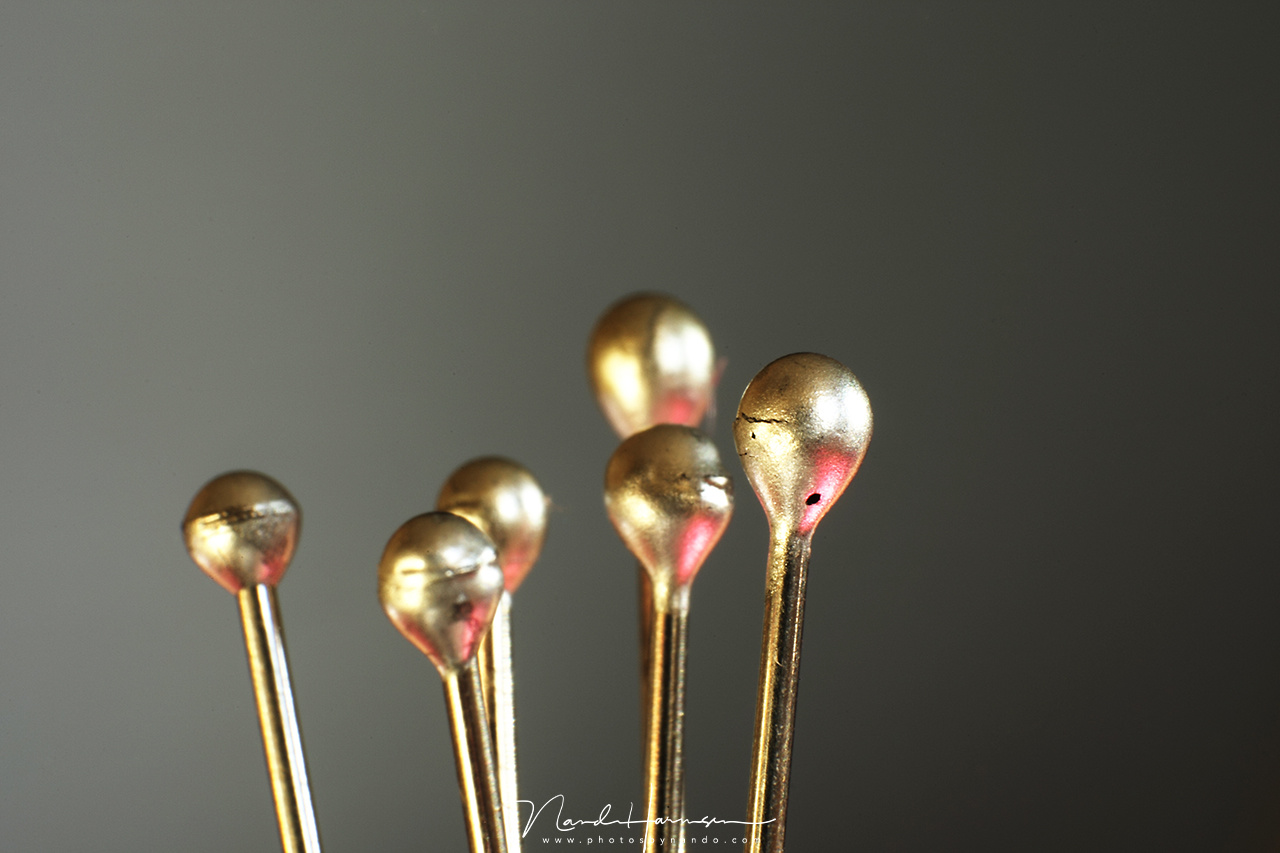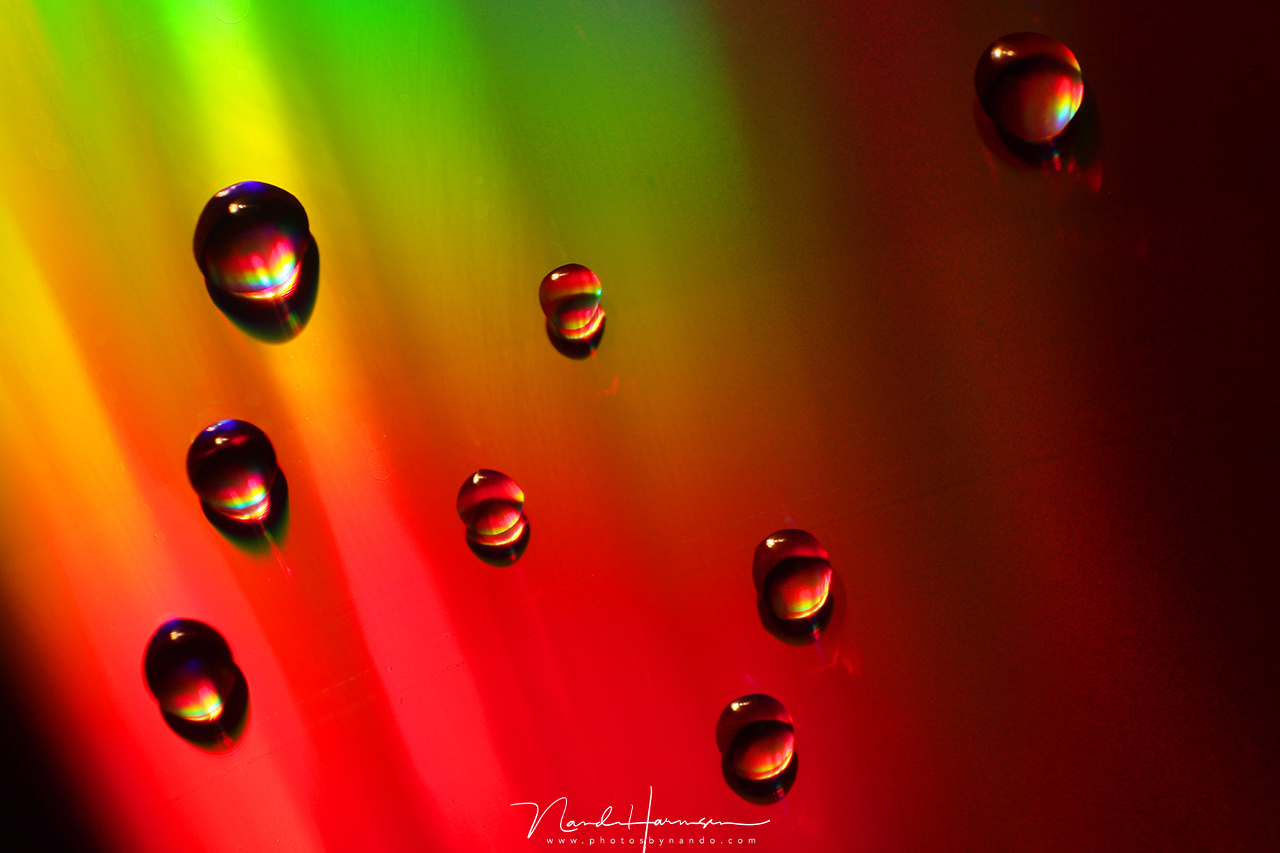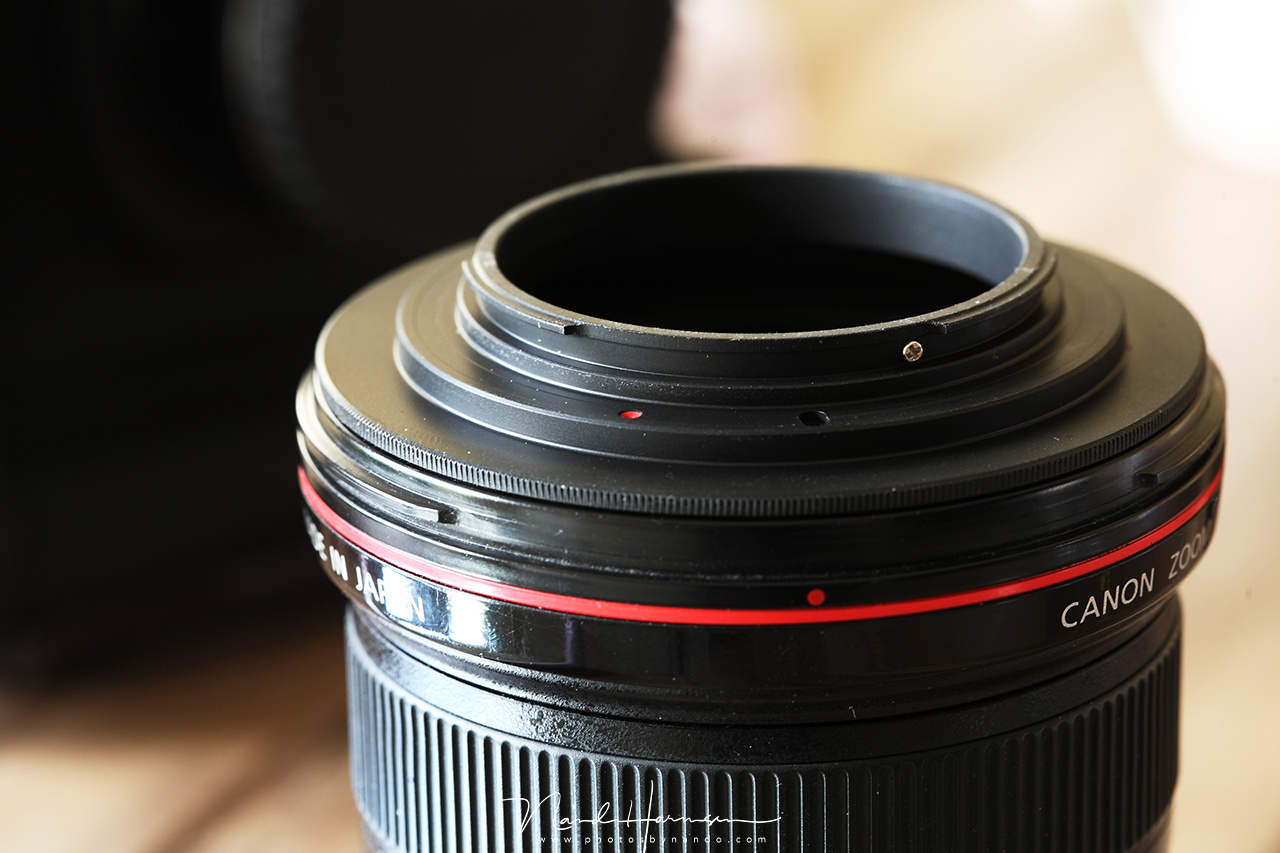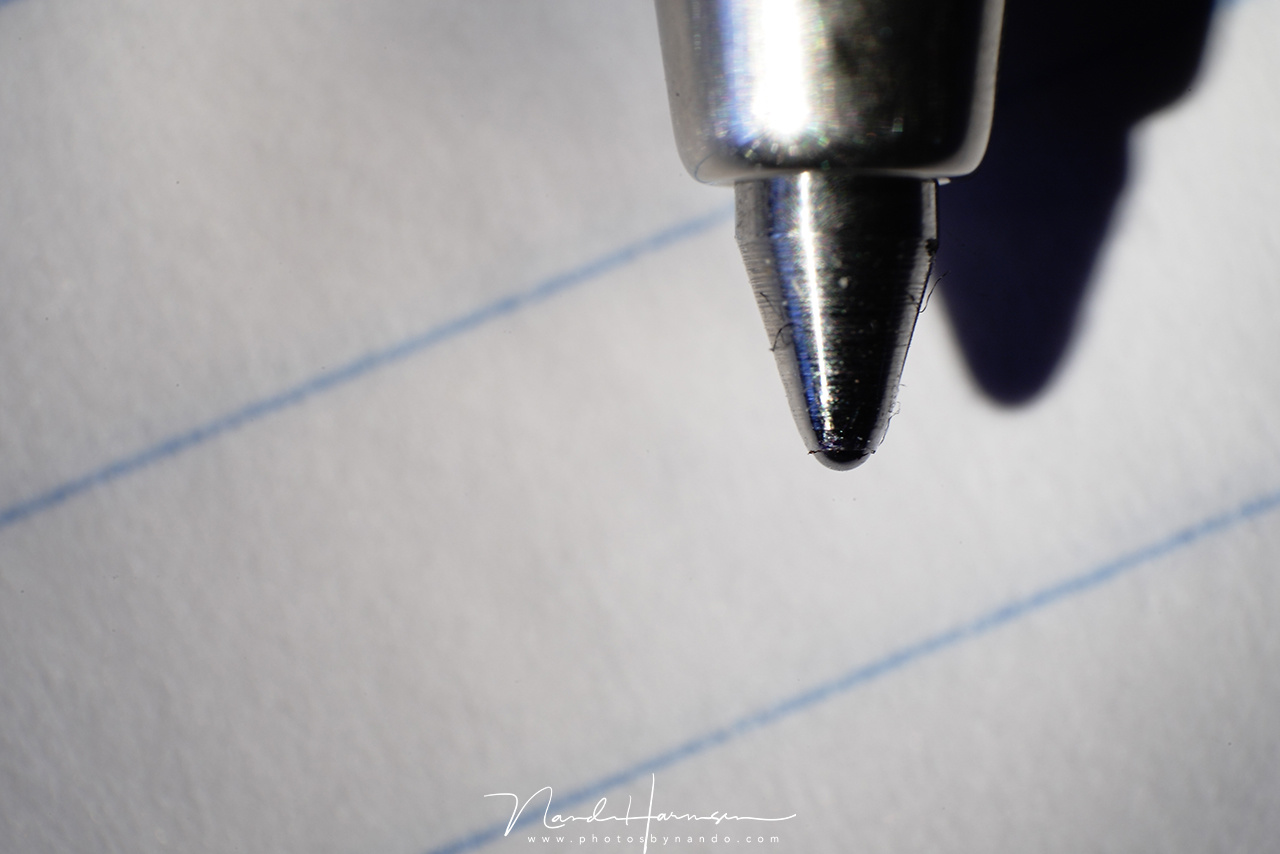Macro photography is a fun thing to do. With a normal macro lens, you can reach up to a 1:1 magnification. With a couple of extension tubes, it is possible to boost the magnification a bit, but not much. If you are interested in higher magnifications, you could try a reverse ring first.
I do perform macro photography on occasion. In my experience, it is a very intensive kind of photography, lying between the grass shooting butterflies or dragonflies. Or perhaps mushrooms and flowers. There are amazing lenses available that allow you to reach a 1:1 magnification. While this might be more than enough on most occasions, there are situations in which you want to magnify a bit more.

A spider in its web with dew drops reflecting the world (EOS 5Dmk3 100mm macro lens | ISO200 | f/6,3 | 1/320)
It is possible to spend a lot of money on a lens with a magnification that goes beyond the 1:1, like the Canon MP-E 65mm, or the Laowa Macro Probe lens. These lenses allow you to reach two times or five times magnification. The investment is no problem if you know this is something you will use a lot. I wrote a whole article about this some time ago: six lenses you probably won't need any time soon. You might have read it.

I once used a Canon MP-E65 lens, which I found very difficult to shoot with. It takes a lot of practice, but I like this close-up I made from the seedhead of a dandelion. (EOS 5D Mark III MP-E 65mm @ 4x magnification | ISO 100 | f/2.8 | 1/10 s)
It is not necessary to invest a lot of money right away. Did you know there is a cheap alternative? Although it is far from perfect, it is an excellent way to find out if you like this kind of extreme macro photography. It is called a reverse ring.
Reverse Rings
Everyone who has looked through a lens that is not fitted to a camera may know it will not only show you everything upside down; it also functions as a magnifying glass. For that, you need to look through the front lens, of course. If you never did, you should try it once. Imagine what would happen if that lens was fitted reversedon a camera. For that, there are reverse rings available. Just screw the ring onto the filter thread and connect it to the camera. This way, you can reach an incredible magnification that exceeds a macro lens. Of course, you cannot use autofocus or the aperture anymore.
When you use your lens reversed, something strange happens. The shorter the focal length, the higher the magnification. Thus, wide-angle lenses work the best. The downside of this is a decrease in focus distance. You need to come close to your subject. And by that, I mean close. If you use a longer focal length, the focal distance will increase, but the magnification will decrease. At one point, a macro lens will be more logical to use again. I used an old Canon EF 17-40mm f/4L lens for my experiments.
A Shallow Depth of Field
The problem of using these rings is the shallow depth of field. Modern lenses have electronic apertures. Without a signal from the camera, an aperture cannot be closed. Therefore, when reversing the lens, the aperture can not be closed. The result is a very shallow depth of field, especially with macro photography.
These rings were used back in the days of analog photography when aperture rings were totally mechanical. You could close the aperture without an electronic signal. This way, it was possible to increase the depth of field when the lens was reversed. You can buy reverse rings that will keep the electronic connection to the camera, like the Novoflex reverse lens adapter, but these are expensive. You could also buy a relatively cheap macro lens for the same money.
Another option is the use of old analog lenses. These lenses have a mechanical aperture ring, as I explained already. But there is also the possibility to close the aperture of your modern lens, if your camera has a depth of field button, that is.
Increasing the Depth of Field
A cheap reverse rings is nothing more than a ring. No surprise there. It does not allow you to close the aperture without this little trick. Your camera needs to have a depth of field button. That button is used to close the aperture manually, which allows you to check the depth of field. If your camera does not have a dedicated button, perhaps it also works when a button is assigned to the depth of field. You should check your camera.
When the depth of field button is used, the aperture will close. If you disconnect the lens while holding the depth of field button, the aperture will stay closed in that position. Some may say it is not the way to remove a lens from your camera, and you are right. But I never had any problems with it. Nevertheless, this has to be done at your own risk.
If the aperture is closed, you can reverse the lens and use it with a larger depth of field. Now, you can experiment with macro photography and a very large magnification without spending a lot of money. If you find out it is something wonderful to do and you enjoy this kind of photography a lot, an investment in an extreme macro lens might be something for you. Or, you can buy a great vintage lens and continue to use it reversed on your camera. This way, you will have full control of your aperture without tricks.

When using the DOF button when removing the lens from the camera, the aperture that was chosen is kept inside the lens.
Some Results
I was very anxious to see what the results would be. I performed a little test to see how far I could go with the EF 17-40mm lens compared to a real macro lens.

I tested the magnification of a reversed lens by shooting some needles. You can see how close by you need to get with a reversed lens.
Working with the macro lens was very easy. Just use the minimum focal distance and shoot. I tried this on a couple of needles with the Canon EF100mm f/2.8L lens, once without and once with a 25mm extension tube. Next, I reversed my EF17-40mm lens and photographed the needles with 40mm focal length and 17mm focal length. Just let the results speak for themselves.

Shot with a Canon EF 100mm f/2.8L lens with a 25mm extension tube. The magnification is 1.39x (according to the-digital-picture.com (https://www.the-digital-picture.com/Reviews/Canon-EF-100mm-f-2.8-USM-Macro-Lens-Review.aspx).

Shot with the Canon EF17-40mm and a reverse ring, with 40mm focal length. The magnification seems to be a tad more compared to the 100mm macro in combination with the 25mm extension tube.

The real magnification occurs when zoomed out to 17mm focal length. I would love to see if this can be reached with a Canon MP-E 65mm at maximum magnification. Unfortunately, I don't have the latter.
I played around some more with the reverse ring. I just chose some stuff inside my home and used a few drops of water also. You should use your imagination and give it a try yourself. It turned out to be lots of fun and a great way to spend a day photographing.

Water droplets on a compact disk (EOS 1D Mark III EF17-40mm reversed at 17mm | f/8 | ISO 100 | 2.5 s)

Water droplets on a compact disk (EOS 1D Mark III EF17-40mm reversed at 40mm | f/8 | ISO 100 | 1/2 s)
What do you think of this kind of photography? Would you prefer a real extreme macro lens, or would you love using reverse rings in combination with a vintage lens? Please let me know in the comments below.














Perhaps in some situations, a macro rail will be useful for focus stacking?
I think this would be a good addition. I also think this is an investment when doing more with macro photography, not for the occasional macro and super macro photographer
Another option for those who just want to play around and not invest in high magnification lenses is - and this is the first time I've recommended one - a clip on adapter. The Raynox DCR-250. You'll need to use it on longer focal length lenses to avoid the vignetting (last I used it I think above 135mm FF equivalent is safe). Works great with even basic kit telephoto lenses. Costs like $68 and is actually very good.
Ah yes, I heard and forgot about it :)
It is a great alternative. Thanks for this addition
A lot are against using reverse rings for macro work, but i did not heed them at all. I started my macro with reverse rings and I loved the results that I got! Plus I was able to utilize the 50mm prime lens and the standard 18-55mm kit lens, getting more out of those lenses than what they are normally used for.
Thank you for your comment. Nice to hear about your experience. I did not know there is a lot against the use of reverse rings/ Do you know why?
They are against it because it exposes the back element of your lens to possible damage and dust, which may also pass the dust to your sensor.
Ah yes, people are often really terrifying of these kind of things.
Thanks for this informative article. Could you elaborate more about the decrease in focusing distance? Is there a formula which helps you determining which distance you end up with?
I'm thinking about purchasing a Voigtlander 58 1.4 (minimum focusing distance 0.45m) and would be happy if I could use it for macro photography by reversing it as well. Unsure which working distance (close focusing distance) I end up with when I reverse the lens though. Any idea?
Thanks.
I have no idea. The shorter the focal length, the shorter the focal distance. I have no formula.
Thanks though!